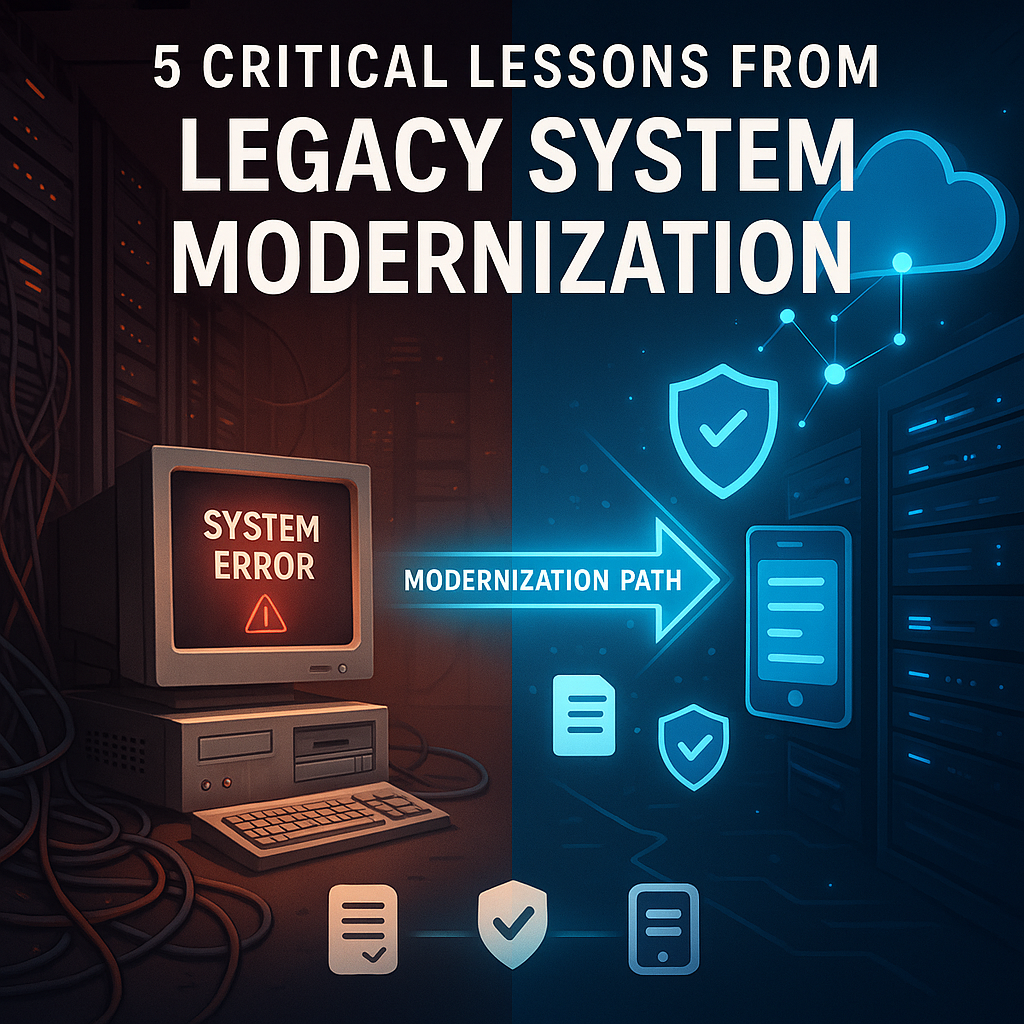Legacy systems are the backbone of many organizations, but their limitations often become glaring over time. A recent in-depth review of an outdated case management system revealed universal challenges that resonate across industries. While the specifics remain confidential, the lessons learned offer valuable insights for any organization grappling with aging technology. Here’s what we discovered:
1. Outdated Technology Stacks Are a Ticking Time Bomb
The Problem: Systems built on obsolete architectures (e.g., client-server models, unsupported programming languages) struggle to integrate with modern tools, lack scalability, and become security liabilities. Compatibility issues with newer hardware and software further exacerbate inefficiencies.
The Lesson:
- Prioritize modernization efforts that adopt cloud-native architectures (e.g., microservices, serverless computing) and widely supported technologies.
- Invest in platforms with built-in scalability to future-proof operations.
- Proactively sunset legacy systems before vendor support ends or security risks escalate.
2. Documentation Gaps Cripple Adaptability
The Problem: Missing or outdated technical documentation creates a “black box” scenario. Teams waste time reverse-engineering workflows, delaying troubleshooting and updates. Knowledge loss escalates as original developers leave.
The Lesson:
- Treat documentation as a living asset. Use collaborative tools (e.g., wikis, version-controlled repositories) to ensure it evolves with the system.
- Embed documentation into development workflows. For example, mandate updates during code reviews or sprint retrospectives.
- Cross-train teams to decentralize institutional knowledge.
3. Security Can’t Be an Afterthought
The Problem: Weak authentication practices (e.g., static passwords), hardcoded credentials, and unpatched vulnerabilities turn legacy systems into low-hanging fruit for cyberattacks.
The Lesson:
- Conduct regular security audits and penetration testing, even for older systems.
- Implement modern authentication (e.g., MFA, OAuth) and encrypt sensitive data at rest and in transit.
- Replace hardcoded values with secure configuration management tools.
4. Poor User Experience Drives Workarounds – And Risk
The Problem: Clunky interfaces, poor mobile compatibility, and frequent crashes push users to adopt risky workarounds (e.g., manual spreadsheets, paper-based processes). This undermines data integrity and creates shadow IT.
The Lesson:
- Design systems with user-centric workflows. Conduct usability testing with frontline staff to identify pain points.
- Prioritize responsive design and cross-device compatibility.
- Automate repetitive tasks (e.g., data entry, report generation) to reduce errors and boost adoption.
5. Neglecting Support Infrastructure Amplifies Downtime
The Problem: Without dedicated testing environments, robust monitoring, or root cause analysis processes, teams resort to reactive “quick fixes” (e.g., system reboots) that fail to resolve underlying issues.
The Lesson:
- Establish dedicated UAT environments mirroring production systems to safely test updates.
- Implement AIOps (AI for IT operations) tools to predict and prevent outages.
- Adopt incident management frameworks (e.g., ITIL) to standardize RCA and resolution processes.
The Path Forward
Modernizing legacy systems isn’t just about technology—it’s about aligning with organizational resilience. Key steps include:
- Assess Ruthlessly: Audit technical debt, security flaws, and user pain points.
- Plan Incrementally: Use phased migrations to minimize disruption (e.g., modular upgrades vs. “big bang” replacements).
- Partner Strategically: Work with vendors who offer long-term support and align with your scalability needs.
- Empower Users: Involve stakeholders early to ensure solutions solve real-world problems.
While legacy systems may still “work,” their hidden costs—security risks, productivity drains, and innovation barriers—are often far greater than the investment required to modernize. The lessons here aren’t just warnings; they’re a roadmap to building systems that drive efficiency, trust, and growth.

Leave a Reply